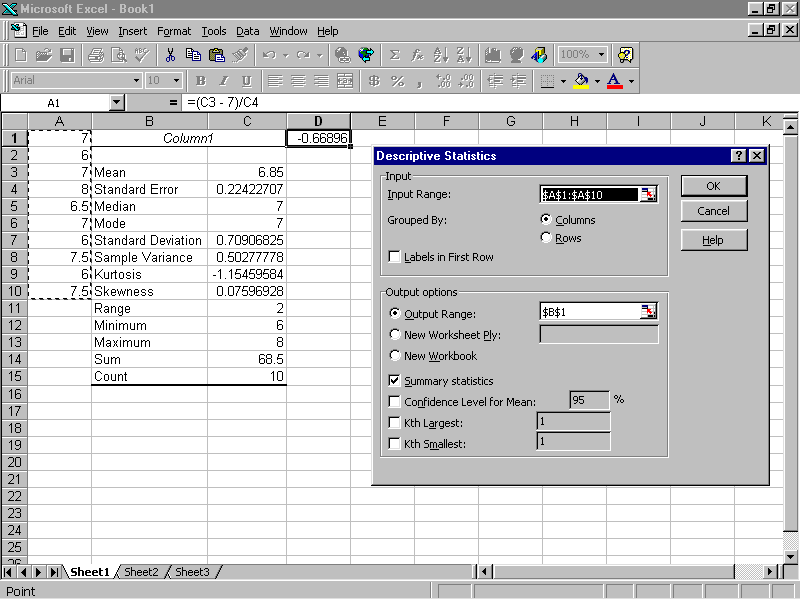

All the variations of Chi-Square are available and can be used depending on your proficiency in statistics. The CHISQ.TEST is not the only Chi Square function available in excel.Select the observed and expected ranges and click “OK”.Type chi in the Search for a Function box and then click “Go”.then select “CHITEST” from the list and then click “OK.” Type your data into columns and click a blank cell where you want to show the results on the worksheet and then click the “Insert Function” button on the toolbar, a pop up would appear.For more complicated data, please check the example above. The expected value in chi-square is normally a simple average or mean for normally distributed datasets. To calculate the p-value in excel, we need to perform the following steps: From our earlier discussion, we now know that this rejects the null hypothesis. The Chi Square value is approximately 0.03.

The above example can be analyzed using the CHISQ.TEST Function to get the Chi-Square value directly and check if our assumption that the location of the furniture is independent of the type of furniture is correct r not. If the test statistic is too large in the present dataset, then we reject the null hypothesis.Īs is clear from the above example, calculating Chi Square and testing for significance of hypothesized data in statistics is a painstaking process and demands high accuracy. The sum of all the Chi Square P values should be 1 if the null hypothesis is true. The Chi Square P-value for the chairs would be calculated as: The null hypothesis is that the location of the furniture is independent of the type of furniture. We find the Chi-Square P-value for the first value that is the number of chairs. (number of rows – 1)(number of columns – 1)

The following formula would determine the degree of freedom for each quantity: This statistic has an approximate Chi-Squared distribution if each quantity is independent of the other. Similarly, we will find the values for each quantity and the sum of these values is the test statistic. Which would give us the value 0.713928183. In the case of the Chi Square test, n = 2 ((Observed Value-Expected Value)ⁿ)/expected value We will check the difference using the following formula: Using this formula, we get an expected number of about 92 Chairs in Hall A as follows:Įxpected Number of Chairs in Hall A = 250 X (362/984) Expected Value =Category Column Total X (Category Row Total/Total Sample Size)


 0 kommentar(er)
0 kommentar(er)
